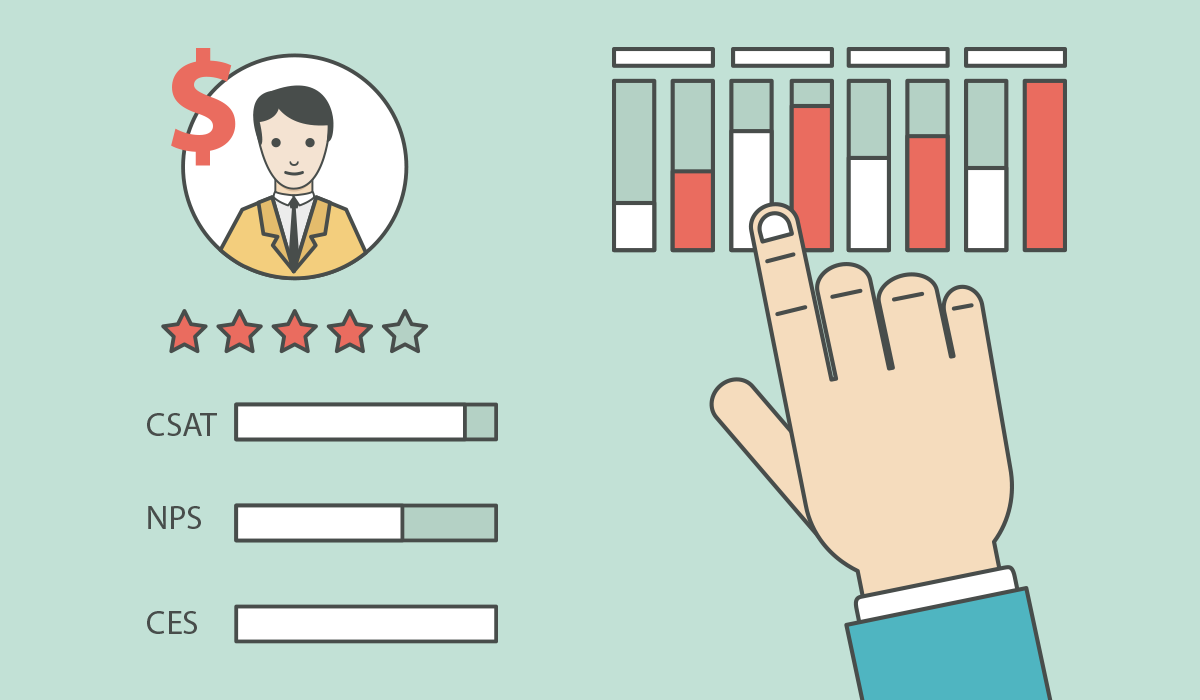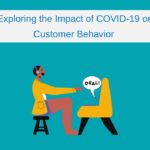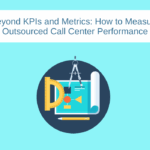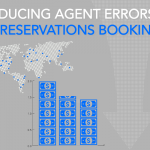Lifetime Customer Value: Measuring Customer Service Performance

Don’t we all wish that customers came with a lifetime guarantee? They’d make their first purchase and be irrevocably smitten for life? In that perfect world, customer retention would be at 100% and customer turnover would be zero.
Since that’s not the world we live in, customers need to experience prompt and dedicated attention at every major customer touch point. Otherwise, you risk turning healthy customer retention rates into customer turnover turmoil, and ultimately reducing the lifetime value of your customer base. For anyone who doesn’t like the sound of that (and we certainly don’t), it’s important that you are effectively measuring the customer service performance metrics that roll up into the customer value equation.
Can Any One Contact Center KPI Boost Customer Lifespan?
Let’s start by dispelling one misconception. There is no one contact center KPI that can totally predict a given customer lifespan. In certain companies, some customer service metrics are more relevant than others, but none come without their own limitations.
Plus, every contact center has its own panorama of values and service objectives that make a one-size-fits-all approach to measuring customer service performance a little questionable. Here are a few incisive ways to sift through the data for a glimpse at what makes customer loyalty last.
Customer Satisfaction Score (CSAT) –How would you rate your overall satisfaction (1 being very dissatisfied and 5 being very satisfied) with the service you received?
On the surface, it seems like this question for measuring customer service performance is all about the immediacy. Yet how do you translate that gut response into an action plan for prolonging the lifetime of your customer?
It starts by adopting the right mentality. 80% of customer service organizations use the CSAT score, and those who see results remain aware of certain realities:
- Any customer service performance data is bound to be altered in some ways by the non-response bias – most people with lukewarm responses won’t take the time to rate their satisfaction. Remember to factor that in to keep your stats honest.
- Peak, unwavering satisfaction doesn’t happen in one go. Every customer interaction needs to feel consistent and unique, as if your customer service is tailored to the specific customer and conveys that you want them back next time. Otherwise, research shows that there’s not much keeping them tethered to your business.
Net Promoter Score (NPS) – How likely is your customer to recommend your company to a friend or colleague? It’s the simple question that gets to the heart of where you stand with customers. For NPS metrics, Promoters (10-9), Passives (8-7), and Detractors (6-0) divide how you’ll be measuring customer service performance, but they alone won’t give you the keys to the castle.
It’s critical to know the tangible value of your promoters to the overall lifetime customer value.
Promoters are your moneymakers. Though it’s an obvious conclusion, the revenue differences between promoters and detractors is worth a glance.
One company studied the difference between detractors who were converted up and those who stayed dissatisfied, finding the average sales growth to be notable. Those converted to promoters increased their average purchases by 25% while those who remained detractors dropped in purchases by 36%. Even detractors who became passives saw a 16% increase in purchases.
Moreover, when you have a higher Promoter score it should be more than just a pat on the back. 80% of your positive referrals come from your Promoters. That means the positive experiences that encourage referrals need to be a customary part of your customer service model. Once again, this points to why you can’t let an exceptional experience be a one-time thing.
Customer Effort Score (CES) –
Customer Effort Score (CES) – This measurement essentially boils down to asking your customer to rate how hard it was for them personally to have their request handled. Generally this is measured by asking the customer to answer the question: How much effort did you personally have to put forth to handle your request? The customer can provide a score from 1 (very low effort) to 5 (very high effort.) Looking at customer effort from a holistic, end-to-end experience requires collaboration from many functional areas – on both the client and the contact center side.
At first glance, the concept of measuring customer effort seems weighted toward the negative. But the value in CES measurement comes from narrowing your focus from the full spectrum of service interactions to just the negative, high effort ones because that’s what your customers remember.
Terrible experiences are what affect customer loyalty the most. Even social psychologists tend to agree. Bad impressions tend to outweigh and outlast good impressions in our memories. One bad experience can tarnish all the good ones that came prior.
Because of that, the greatest value of the CES for your customer service solution comes from identifying barriers to a quick and painless customer interaction. That means, ensuring that none of the following problems diminish your first-contact resolution:
- IVR phone systems that run customers through a maze of extensions.
- Email communication that is sluggish or repetitive.
- Multiple interactions to resolve a single, repeated problem.
- Shifting between multiple channels of communication to resolve a problem.
Do you think you have excellent first-contact resolution? You may be wrong. Almost a quarter (22%) of all downstream issues are related to the issue that encouraged your client to reach out in the first place.
By gathering extensive data about related issues in your customer effort survey, you can expand the information and offerings your contact center reps provide in the initial interaction, decreasing the level of overall effort your clients need to exert.
The Extensive Effort Behind Lifetime Customer Value
What happens after you go through the process of taking all these measurements? You do it again and again. Effective metrics are constantly updated. Good customer service is never interrupted (not even for a minute). It can be a strain on your workforce, but having a customer service arm without measurement tools makes it little more than a cost center.
With all of the features of modern multichannel customer service – telephone, email, live chat, social media support, SMS texting, and more – it can be tough to keep up strong customer retention on your own. That’s why you bring on a contact center that strives to be an authentic extension of your business and your brand.
In our outsourced contact center world, we specialize in helping companies build brand loyal customers with quality care that is indistinguishable from what you would expect from your own employees, and we measure everything. In fact, we like to think of ourselves as a part of every customer’s team. If you want that level of dedication (plus our years of customer service experience), feel free to reach out to us. We’d be happy to show you how we can help build lifetime customer value.



